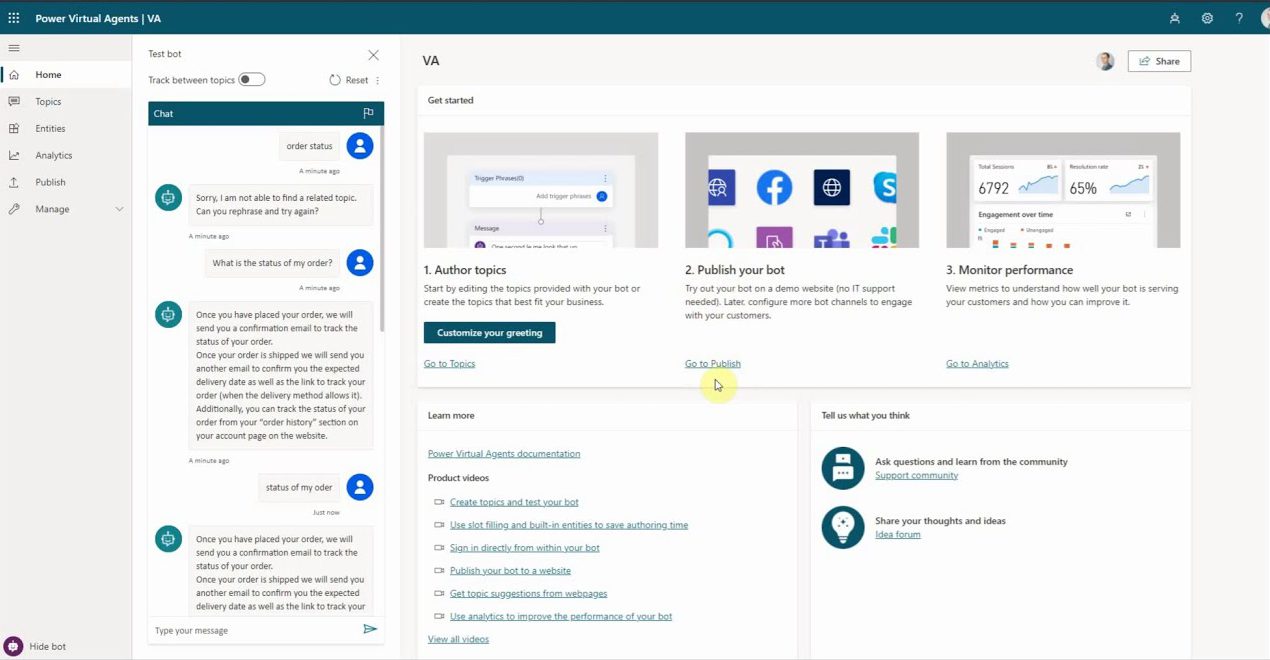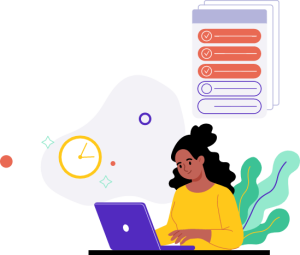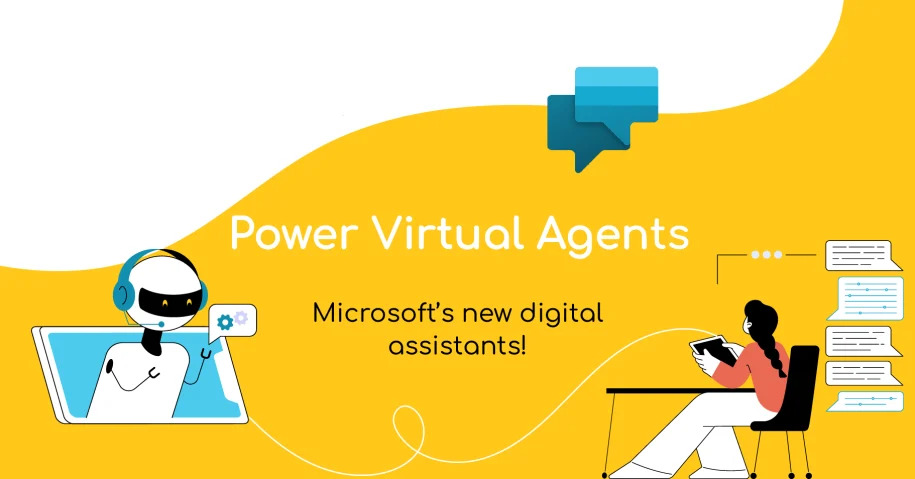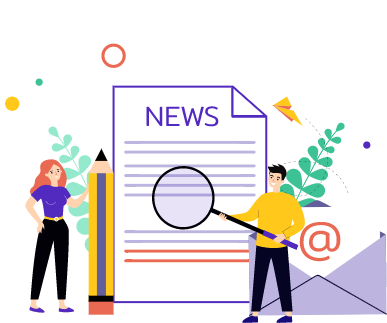In the summer of 2023, Microsoft Power Virtual Agents appeared to the digital landscape. Recognizing the needs of Customer Support, Microsoft created a tool that, with almost no code needed, allows custom chatbots to be built quickly, affordably, and simply!
But what exactly are Power Virtual Agents? How much does it cost and what value does it offer to each company that uses this tool?
In this article we will delve into the capabilities of this groundbreaking tool by answering all your important questions!
Let’s start!
In this article you will find:
- What is Microsoft Power Virtual Agents and how does it work?
- How can businesses benefit from using Power Virtual Agent?
- Key components of Power Virtual Agents
- How to build your own Power Virtual Agents in Microsoft?
- Examples of applications in various fields
- Why to choose Microsoft Power Virtual Agents
- New applications and prospects for the future of Power Virtual Agents
What is Microsoft Power Virtual Agents and how does it work?
Power Virtual Agents is a service offered by Microsoft as part of the Power Platform suite.
It is a tool that allows users to create, without the use of code, custom virtual agents – chatbots to automate communication with customers, employees or other service systems.
Chatbots built with Power Virtual Agents can be used to answer specific questions, provide information, collect data, and perform various tasks. All this without the need for programming skills!
How does it work?
The user defines the goals and creates dialogues for the chatbot. Each dialog represents a specific type of communication with the user, such as question-answer, information gathering, etc.
The system then uses AI techniques to properly train the bot to understand and respond to user questions and commands.
With the ability to connect to other services and data sources, such as databases and CRM systems, chatbots can provide personalized solutions, offering an intuitive way to communicate with users.

How can businesses benefit from using Power Virtual Agents?
The implementation of Microsoft Power Virtual Agents offers significant benefits to enterprises in various sectors, such as:
Improving customer service
First, Power Virtual Agents enables businesses to improve customer service by creating chatbots that respond instantly to questions and issues. This can lead to increased customer satisfaction and reduced waiting times. Plus, Power Virtual Agents gives you 24/7 customer service after business hours.
Task automation
Microsoft Power Virtual Agents enables the automation of processes and tasks, helping to save time and resources. Creating chatbots for repetitive tasks can allow staff to focus on more complex tasks, while automated responses can serve customer needs quickly and efficiently.
Integration with other Microsoft products
Also, Power Virtual Agents integrates seamlessly with other Microsoft ecosystem products, offering end-to-end solutions. The connection with Power BI enables immediate data analysis, while the integration with Power Apps and Power Automate enables the extension of its functions.
Flexibility
Microsoft Power Virtual Agents enables flexible customization and extension of chatbots, as well as integration with other services and data sources. This allows businesses to tailor their solutions to their specific needs and leverage information from a variety of sources.
Increased productivity
Overall, integrating Power Virtual Agents into the business process can lead to more efficient customer service. The ability to handle tasks that previously required human intervention helps increase productivity and save time and resources!
Internal use
Microsoft Power Virtual Agents can also be effectively used for processes within your organization! Specifically, it can:
- Create a knowledge base of HR FAQs for your employees.
- To reserve meeting rooms.
- To organize the leaves of your employees.
- To connect you with the right expert depending on your problem.
- To generate accurate reports in natural language.
Key components of Power Virtual Agents
Understanding the key components of Power Virtual Agents is crucial for creating a functional and effective chatbot. These components work together to ensure your bot can handle user interactions efficiently and deliver a seamless experience.
Topics are the foundation of your bot’s conversational capabilities. They define the scope of conversations your bot can handle by specifying trigger phrases and conversation flows. Trigger phrases are the words or questions users might use to initiate a specific topic, such as asking about order status or tracking packages. The conversation flow determines how the bot interacts with users, gathers information, and resolves queries. By using the visual editor, you can design logical and engaging flows tailored to your needs.
Entities play a vital role in helping your bot understand and extract specific pieces of information from user input. These can include prebuilt entities for common data types like dates, numbers, and locations, or custom entities tailored to your business, such as product names or service categories. By leveraging entities, your bot can process and respond to user queries with greater precision.
Actions allow the bot to perform tasks such as retrieving data, sending emails, or calling external services. You can integrate the bot with other systems, including Microsoft Power Automate and other APIs.
How to build your own Power Virtual Agents in Microsoft?
Building a Power Virtual Agent in Microsoft is a straightforward process, even for users without technical expertise. Follow these steps to create and manage a bot tailored to your needs:
1. Register on the platform
The first step is to sign up for Microsoft Copilot Studio, a Software as a Service (SaaS) platform that enables easy bot creation. Once registered, you can start building your bot and seamlessly embed it into your desired website or application.
2. Create your bot easily
No coding knowledge? No problem! Microsoft Copilot Studio provides an intuitive, code-free graphical interface. This user-friendly design empowers you to create bots quickly without needing expert developers. Simply follow the prompts and use pre-built templates to streamline the process.
3. Enable advanced chats
Harness the power of AI to create engaging and intelligent conversations. Provide examples of the topics you want your bot to handle, and design the conversation flow using the graphical editor. The platform’s real-time test panel allows you to refine and optimize your bot’s responses as you build.
4. Use bots to perform actions
Take your bot’s capabilities further with Power Automate. This integration allows your bot to perform specific tasks, such as retrieving user information, processing requests, or sending notifications. By automating these actions, you can create a robust support system to serve your customers more effectively.
5. Monitor bot performance
Once deployed, it’s important to track how your bot is performing. Microsoft Copilot Studio provides built-in analytics to monitor metrics such as session duration, resolution rates, and user satisfaction. Use this data to identify areas for improvement and make adjustments to enhance your bot’s effectiveness.
6. Automate your tasks
Combine Microsoft Copilot Studio with Customer Service Insights to gain deeper insights into your operations. Identify trending topics and resource-intensive issues, then automate responses to these common scenarios. This approach not only improves efficiency but also ensures consistent support for your users.
7. Deploy your bot across multiple channels
Microsoft Copilot Studio makes it easy to deploy your bot to various platforms, including websites, mobile apps, and social media channels. You can even integrate it into Microsoft Teams for internal organizational use. This multi-channel capability ensures your bot is accessible to users wherever they are.
8. Regularly update and improve
To keep your bot relevant and efficient, periodically review its performance and user interactions. Update its topics, refine conversation flows, and add new capabilities as needed. Continuous improvement ensures your bot remains aligned with your goals and user expectations.
Examples of applications in various fields
Microsoft Power Virtual Agents can be applied to various sectors and industries, providing solutions that adapt to the needs of each business.
Examples of applications in various fields are provided below:
Customer service
Building a chatbot that can answer customer questions about products, services, return policies and more, offering prompt and efficient service.
Human resources
Building a chatbot that can answer employee questions about company culture policies, employment benefits, licensing issues, and more.
Sales and Marketing
Integrating a chatbot on the website to answer customer questions about offers, new products and purchase instructions.
Production Management
Creating a chatbot to provide updates on production status, track equipment availability, and respond to staff questions.
Education
Building a chatbot to provide information about study programs, available professors, deadlines, and other student-related issues.
Health and Pharmaceuticals
Chatbot application to provide basic information about diseases, prevention, directions for tests and appointments in medical centers.
Why to choose of Microsoft Power Virtual Agents
15+ languages: Thanks to the customized user experience, you can bypass language barriers. With Power Virtual Agents from Microsoft, you can customize your chatbots in more than 15 languages like English, French, German, Chinese or your local language!
Multi-author support: Your team members have the ability to collaborate in real-time to create chatbots and focus on different tasks, depending on their field of expertise.
Import & export: You can import and export bots across solutions and environments, while ensuring change control and data retention. Then you can schedule the release at the right time.
Pre-built connectors: Power Automate integration makes Power Virtual Agents even more powerful. Chatbots can integrate actions using pre-built connectors within Power Platform and optimize workflows thanks to accurate error detection.
International presence: No matter where you are in the world, you can access Microsoft Power Virtual Agents, thanks to data centers located in North America, Asia, Europe and Australia.
New applications and prospects for the future of Power Virtual Agents
The innovations of Microsoft Power Virtual Agents do not stop here! New technologies and sophisticated systems are about to be integrated into your digital assistants so that you take off the conversation experience inside and outside your organization!
Bot configuration
Power Virtual Agents lets you combine Azure Bot Framework Composer with a low-code platform. This way you can create custom bots that perfectly fit your organization’s needs.
Copilot and Artificial Intelligence
Power Virtual Agents is set to be equipped with cutting-edge generative AI capabilities. By pointing a source of information to the bot and combining it with a GPT tool, the digital assistant will be able to provide a sophisticated conversation, developing a multi-turn chat experience.
Voice chat
With the rapidly developing technology in the field of voice recognition, it is likely that we will see Power Virtual Agents incorporate this innovation into chatbots. With the ability to understand voice commands, businesses will have the ability to offer a more natural and convenient customer experience through chatbots.
Automate your customer service with the help of experts!
The main point that can take off your business and give you a strong competitive advantage, is comprehensive and effective customer service! With the help of customer service organization and automation tools, you can save time, resources, and also offer a unique customer experience to your clients.
At NUS Solutions we leverage the latest Microsoft and AI tools to automate every task of your business and successfully lead you through an integrated digital transformation!
Turn your vision into reality!





…